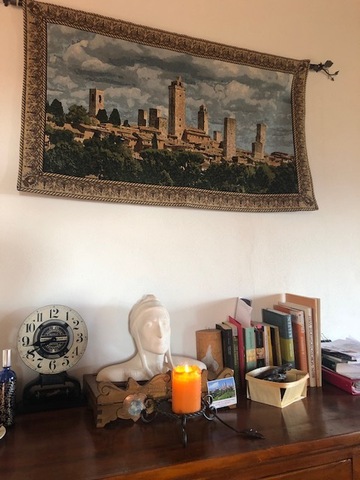
Many of us are feeling distressed by the division and discord around us. If you've been wondering how to heal the painful political polarization, you could take a cue from the Renaissance.
Let me explain. When we're feeling threatened and stressed, we go into survival mode—reacting with fight, flight, or freeze (LeDoux, 1996). Our higher brain centers and creative capacity shut down to focus on the threat, and we fall into the false dilemma of either/or—us or them, win or lose. We see anyone who disagrees with us as the enemy, run away and hide, or freeze into helplessness.
The survival reaction can save our lives in an emergency, but most of the time it limits us. Stuck in the false dilemma, we can't use our innate creative capacity to respond with resilience, to discover new possibilities.
The Renaissance was one of the most creative periods in human history. Theologians began teaching that each person had been given unique strengths as a gift from God, that it was each person's duty to discover, develop, and use them to serve the Lord, fulfill their destiny, and contribute to their community.
When people believed that they had these personal strengths, they began to discover and use them, leading to unprecedented creative contributions to literature, science, leadership, and the arts (Dreher, 2008).
In our own time, positive psychologists have found that each of us has our own personal character strengths and when we discover and use them, we are happier, healthier, and more successful (Peterson & Seligman, 2004; Seligman et al., 2005). You can discover your own top character strengths by taking the free VIA character survey at https://www.viacharacter.org/.
You can connect with your top strengths now by looking back in your memory to a time when you felt a deep sense of joy, energy, and empowerment.
What were you doing—Connecting with a partner? Participating in a sport? Creating art or music? Solving a problem? Feeling a sense of awe in nature? Or something else? Feel yourself back there now. What were you doing? What did it look like and feel like?
Now focus on a personal strength you were using. Was it creativity, curiosity, love of learning, bravery, persistence, integrity, love, kindness, fairness, leadership, spirituality, appreciation of beauty and excellence, gratitude, hope, humor, or something else?
What strength stands out for you?
Ask yourself, "What is one step I can take to use more of this strength in my life today?"
Imagine yourself doing this. What would it look like and feel like?
Now you can take the first step in using this strength. You can transcend the limiting false dilemma. By bringing your own creative gifts to the world, you can begin creating a new Renaissance within and around you.
I wish you joy on the path
References
Dreher, D. (2008). Your personal Renaissance. Cambridge, MA: Da Capo Press.
LeDoux, J. (1996). The emotional brain. New York, NY: Simon & Schuster.
Peterson, C. & Seligman, M. E. P, (2004). Character strengths and virtues. New York, NY: Oxford University Press.
Seligman, M. E. P., Steen, T. A., Park, N, & Peterson, C. (2005). Positive psychology progress: Empirical validation of interventions. American Psychologist, 60, 410-421.
Picture, Renaissance tapestry and Dante candle from Eve Solis.








